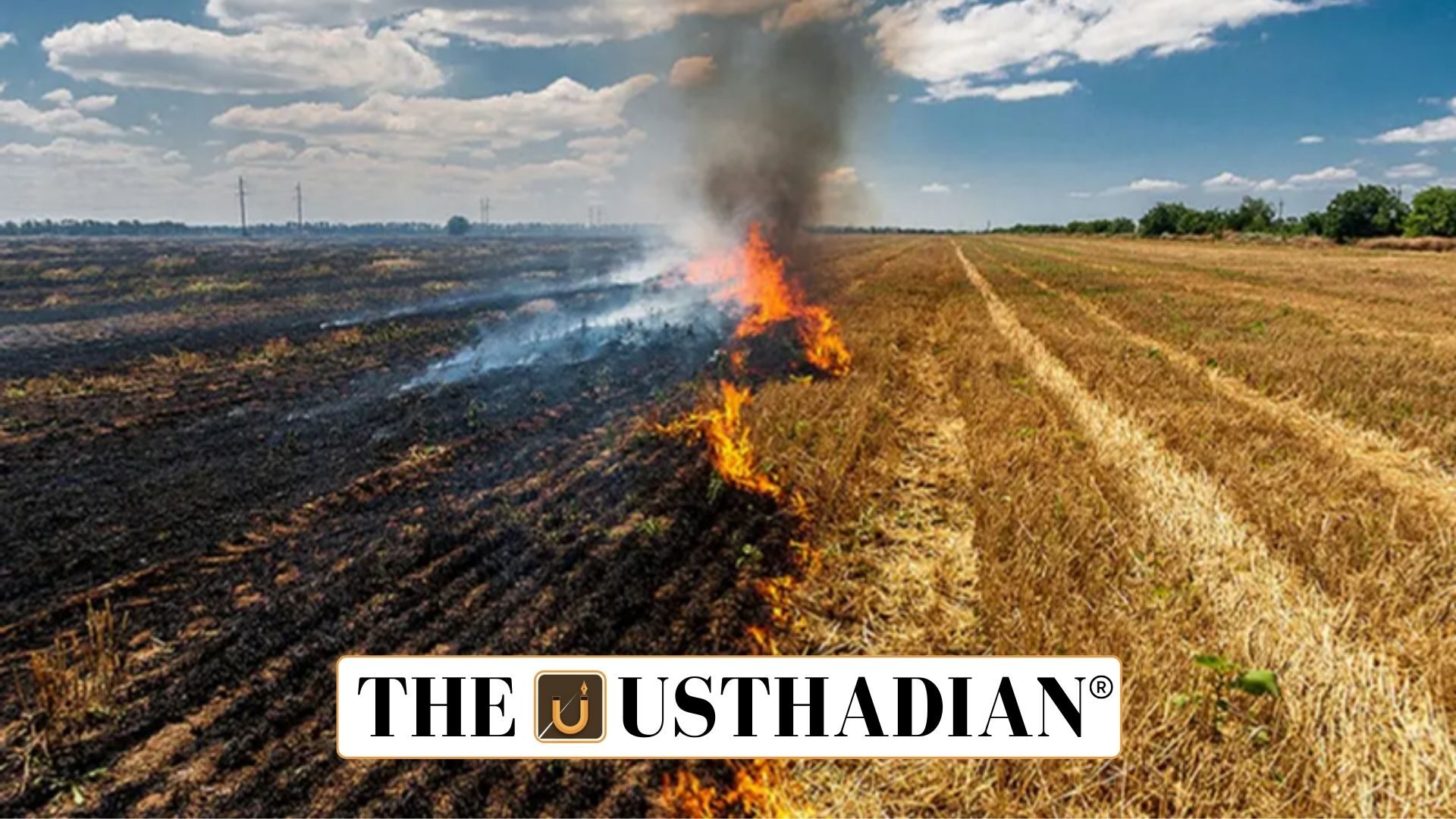Understanding Crop Residue
Crop Residue and its Ecological Impact: Crop residue refers to the stalks, leaves, and plant material left behind after harvesting crops. In India, residues from rice, wheat, maize, and sugarcane are among the most common. Farmers often clear fields by burning these residues due to cost efficiency and time pressure.
Static GK fact: India produces nearly 500 million tonnes of crop residue annually, with Punjab, Haryana, and Uttar Pradesh being major contributors.
Impact on Soil Health
Burning residue causes a sharp loss of essential soil nutrients like nitrogen, phosphorus, and potassium. This reduces soil fertility and weakens long-term agricultural productivity.
Static GK fact: The Ministry of Agriculture estimates that burning one tonne of rice residue leads to the loss of 5.5 kg nitrogen and 2.3 kg phosphorus.
Threat to Air Quality
The release of particulate matter, carbon monoxide, and greenhouse gases during residue burning worsens India’s air pollution crisis. It contributes to severe smog episodes, particularly in Delhi-NCR during winter.
Static GK fact: The practice of stubble burning accounts for nearly 25–30% of PM2.5 levels in North India during peak season.
Effect on Agroecological Biodiversity
The new study highlights that crop residue burning severely harms arthropods, birds, and soil organisms. Decline in spiders, ladybirds, frogs, and earthworms reduces natural pest control, increasing pest outbreaks. This destabilizes food chains and weakens farm ecosystems.
Disruption of Natural Predators
Loss of predatory insects creates cascading effects across trophic levels. Without checks, pests multiply faster, forcing farmers to rely on chemical pesticides, which further damage biodiversity and soil health.
Static GK Tip: Ladybirds are known as natural predators of aphids, one of the most common crop pests in India.
Sustainable Alternatives
Experts suggest alternatives like happy seeders, mulching, composting, and biogas generation from crop residues. These methods recycle nutrients back into the soil, reduce pollution, and support sustainable farming.
Static GK fact: The Indian Council of Agricultural Research (ICAR) promotes the use of Happy Seeder technology for direct sowing of wheat without removing rice stubble.
Static Usthadian Current Affairs Table
Crop Residue and its Ecological Impact:
| Topic | Detail |
| Definition of crop residue | Plant material left on fields after harvest |
| Annual crop residue in India | Around 500 million tonnes |
| Major residue burning states | Punjab, Haryana, Uttar Pradesh |
| Nutrient loss per tonne of rice residue | 5.5 kg nitrogen, 2.3 kg phosphorus |
| Contribution to North India PM2.5 | 25–30% during winter season |
| Impact on biodiversity | Decline in arthropods, birds, natural predators |
| Examples of natural predators | Spiders, ladybirds, frogs, earthworms |
| Consequence of predator loss | Pest outbreaks and pesticide dependence |
| Sustainable alternatives | Mulching, composting, Happy Seeder, biogas |
| Organization promoting Happy Seeder | ICAR (Indian Council of Agricultural Research) |








